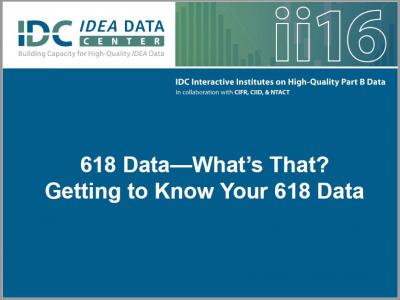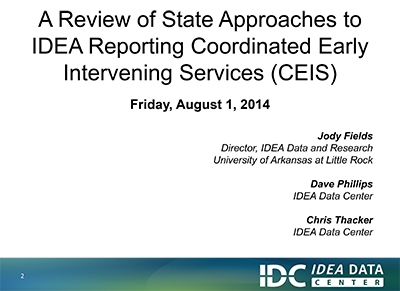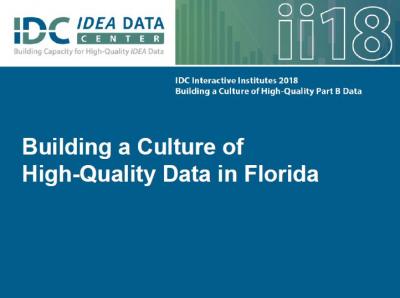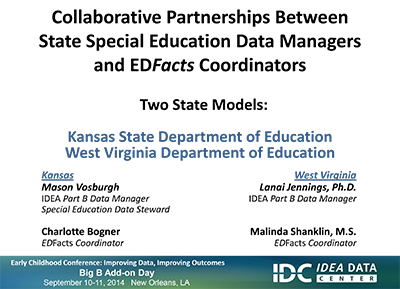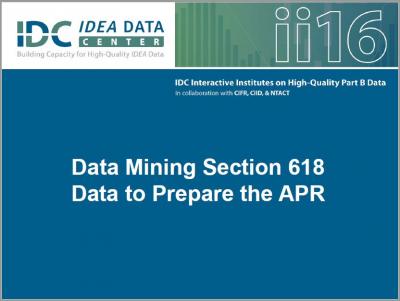Site Search
Results 1 - 7 of 19
Format: Presentations
618 Data—What’s That? Getting to Know Your 618 DataHave you heard these terms 618, 616, EDFacts, EMAPS, file specifications, OMB-MAX, GRADS360, Data Quality Reports? Do you understand what they are referencing? Do you want to gain a higher knowledge of these terms? Participants in this presentation learned more about IDEA data reporting requirements in relation to the 618 data collections. They also learned about data quality considerations and tools states can use when going through the data collecting and reporting procedures.
Format: Presentations
A Review of State Approaches to IDEA Reporting Coordinated Early Intervening Service (CEIS)IDEA allows, and sometimes requires, LEAs to use funds provided under Part B of IDEA for CEIS for students who are not receiving special education services. There are multiple data collection and reporting requirements associated with the use of these funds for CEIS. IDC staff review how a diverse subset of states and their LEAs are working to meet those requirements. Both aggregate and student-level reporting approaches are reviewed.
Format: Presentations
Building a Culture of High-Quality Part B Data – Florida and New JerseyThis session highlighted Florida and New Jersey as presenters. They told their states' stories of how they have created a culture of high-quality data.
Format: Presentations
Collaborative Partnerships Between State Special Education Data Managers and EDFacts Coordinators: Two Models-Working Together to Make a DifferenceThe presentation outlined the collaborative partnerships between the Part B data manager and EDFacts coordinator in two states--West Virginia and Kansas. The discussion included a range of topics from collaborating on data collection and verification at the LEA level to SEA EDFacts submissions. The presentation included time for other Part B data managers to share strategies for successful submission of their 618 data through EDFacts.
Format: Presentations
Collecting High-Quality Data: Why It Is ImportantThis presentation focused on what is meant by the term “data quality” and provided information regarding the importance of high-quality data in the collection, reporting, and use of data in local and state decision making. Presenters shared actual examples from state experiences.
Format: Presentations
Collecting Quality Data: Why It Matters and Guidance to Improve Our ProcessThis presentation provided information that would allow participants to increase their knowledge of what constitutes high-quality data, how to improve processes for collecting high-quality data, and the use of high-quality data for measuring program effectiveness.
Format: Presentations
Data Mining Section 618 Data to Prepare the APRThe required measurements for APR Indicators B3, B4, B5, B6, B9, and B10 (the assessment, discipline, LRE, and disproportionality indicators) are based on Section 618 data. This session focused on selected section 618 data submissions and how the data can be explored to provide more in-depth information for use in discussion with state’s APR stakeholders. Presenters demonstrated some practical methods for taking a deeper look at data in the IDEA EDFacts file submissions using readily available data analysis tools (Microsoft Excel).


